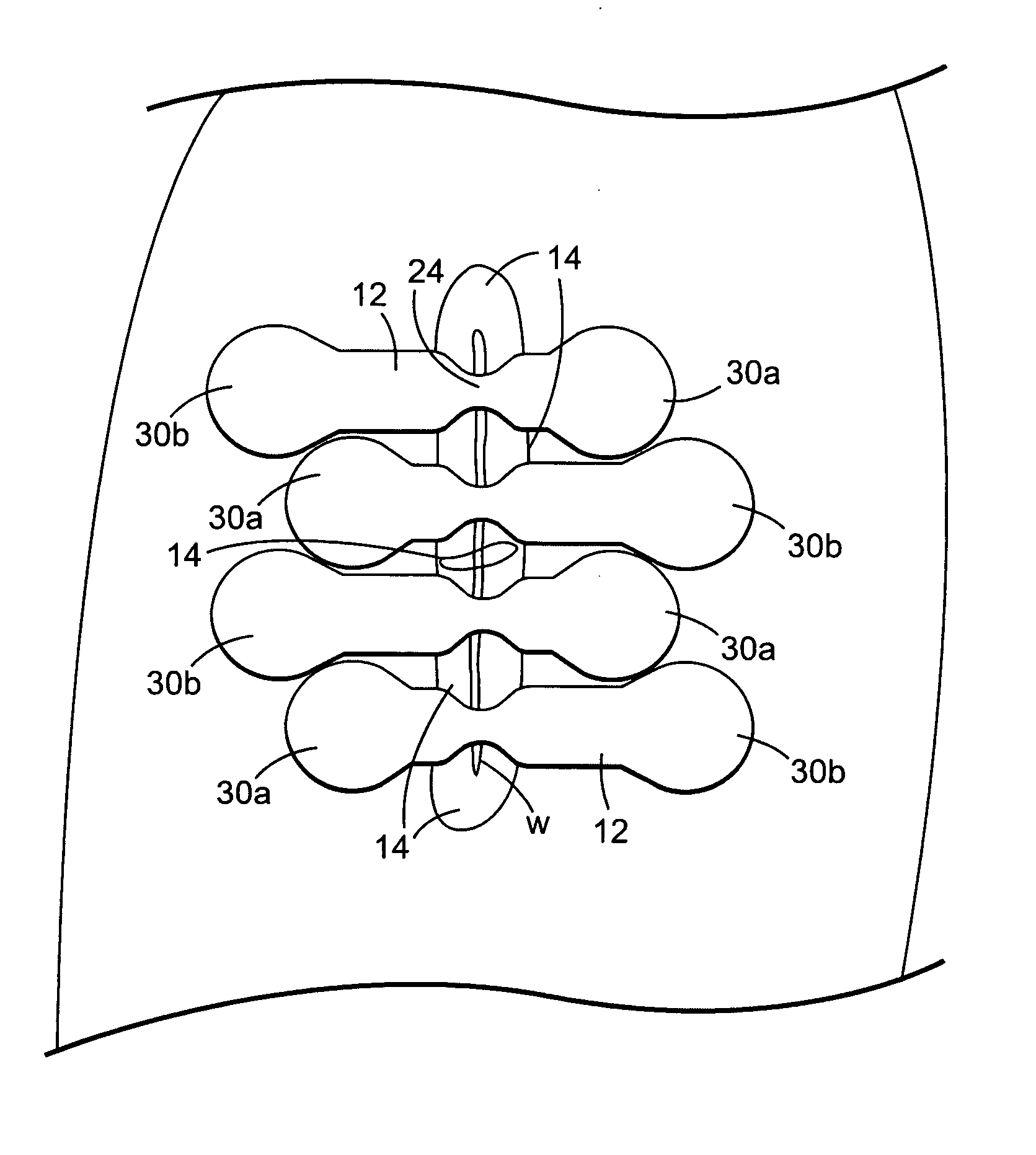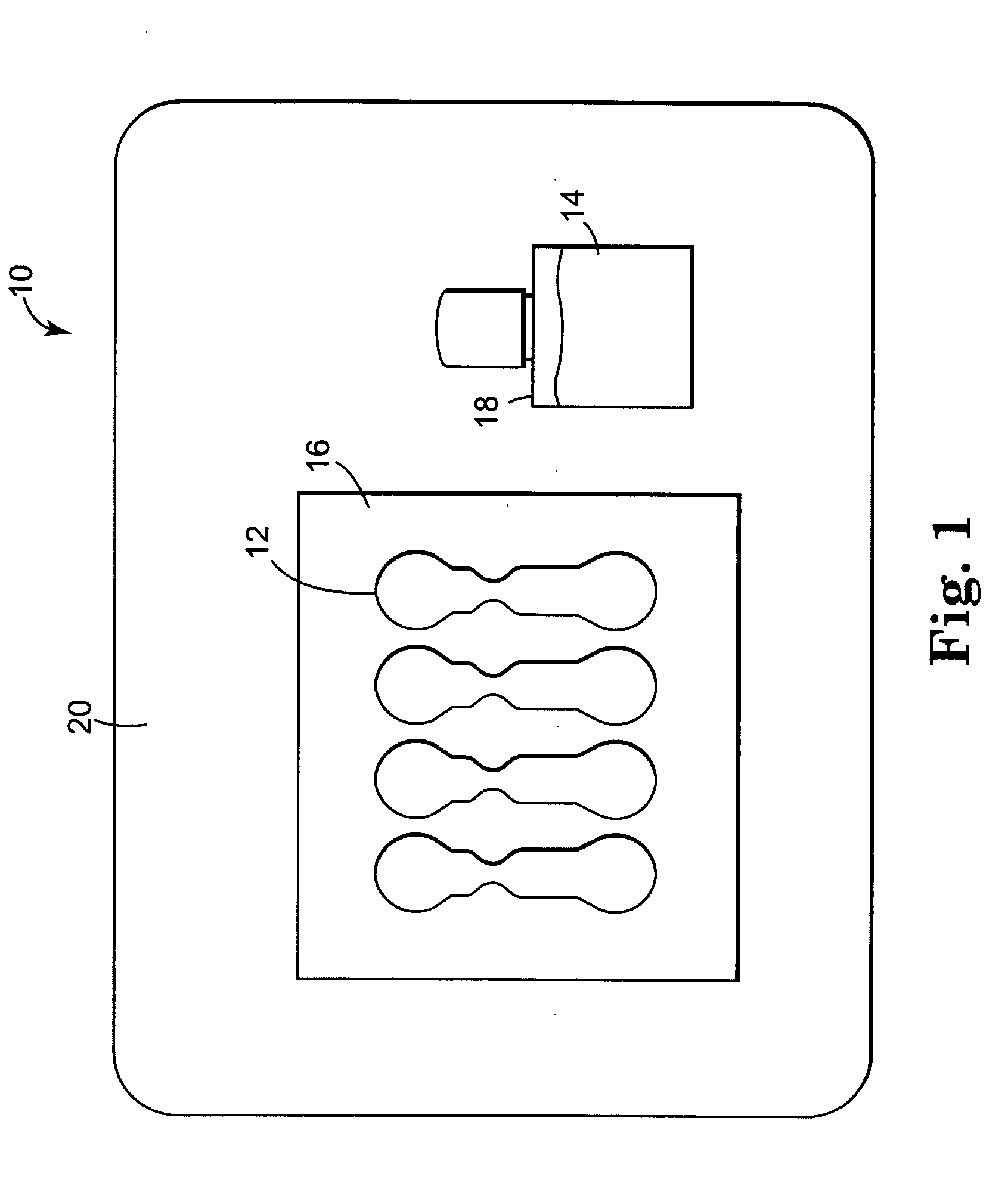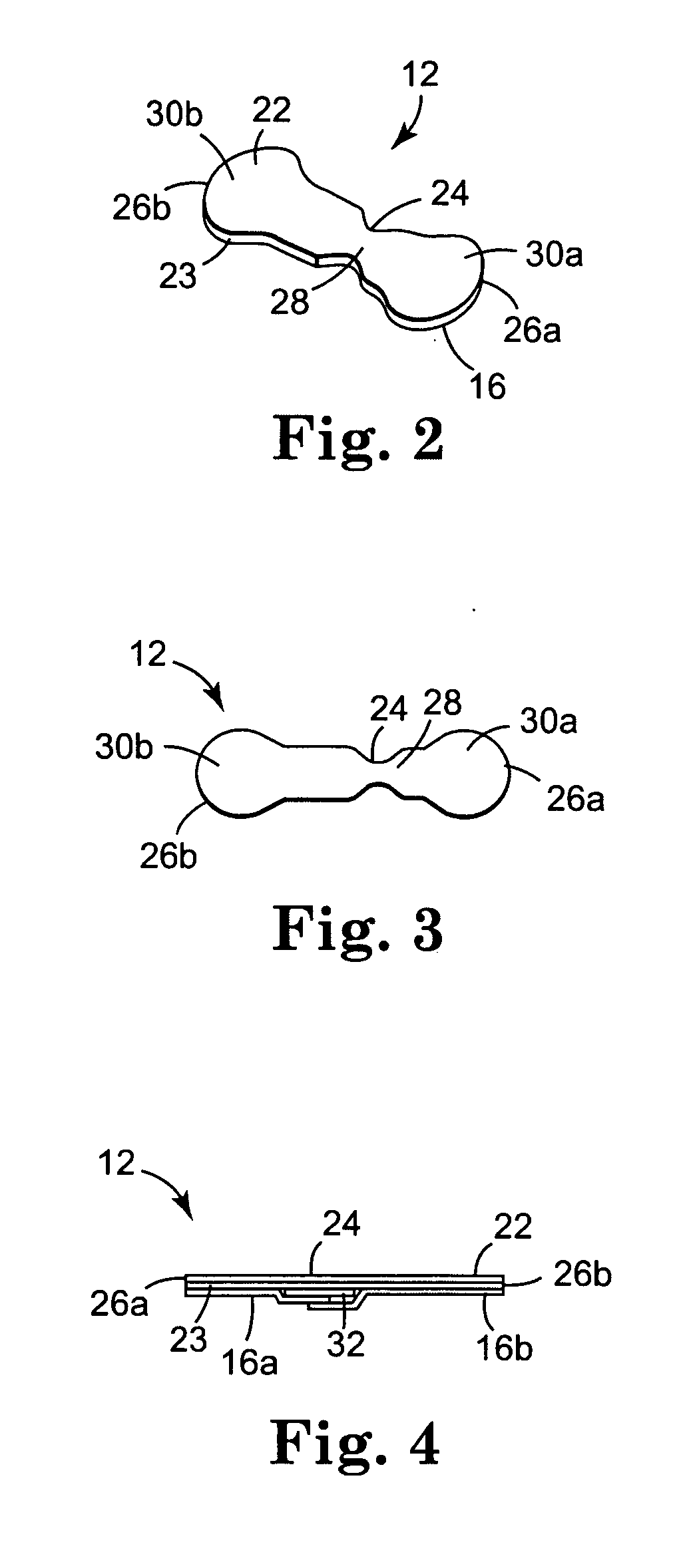Wound closure system and method
a wound and wound technology, applied in the field of wound treatment and wound closure, can solve the problems of inability to sustain large forces, and achieve the effect of avoiding mechanical irritation of the skin near the wound and good wound edge opposition
- Summary
- Abstract
- Description
- Claims
- Application Information
AI Technical Summary
Benefits of technology
Problems solved by technology
Method used
Image
Examples
Embodiment Construction
[0033] Referring now to FIG. 1, an exemplary wound closure system 10 is illustrated in the form of a kit. The kit 10 includes wound closures 12 and a quantity of adhesive skin paint 14. The wound closures 12 may be mounted on a release liner 16, while the adhesive skin paint 14 may be provided in a dispensing bottle 18 or other container. The system 10 may preferably be provided in a package 20. In some embodiments, the package 20 may be adapted to cooperate with some method for sterilizing the kit, e.g. the package may include a layer of a spun bonded polyolefin (such as TYVEK) which is permeable to ethylene oxide gas.
[0034] Referring now to FIGS. 2 and 3, an exemplary wound closure 12 is illustrated in isolation. The wound closure 12 has a backing 22 and a layer of skin adhesive 23 contacting the backing. In the embodiment depicted in these figures, the release liner 16 is shown diecut to size rather than cut to support several wound closures as in FIG. 1. In either case the rele...
PUM
| Property | Measurement | Unit |
|---|---|---|
| temperature | aaaaa | aaaaa |
| pore sizes | aaaaa | aaaaa |
| length | aaaaa | aaaaa |
Abstract
Description
Claims
Application Information
 Login to View More
Login to View More - R&D
- Intellectual Property
- Life Sciences
- Materials
- Tech Scout
- Unparalleled Data Quality
- Higher Quality Content
- 60% Fewer Hallucinations
Browse by: Latest US Patents, China's latest patents, Technical Efficacy Thesaurus, Application Domain, Technology Topic, Popular Technical Reports.
© 2025 PatSnap. All rights reserved.Legal|Privacy policy|Modern Slavery Act Transparency Statement|Sitemap|About US| Contact US: help@patsnap.com



